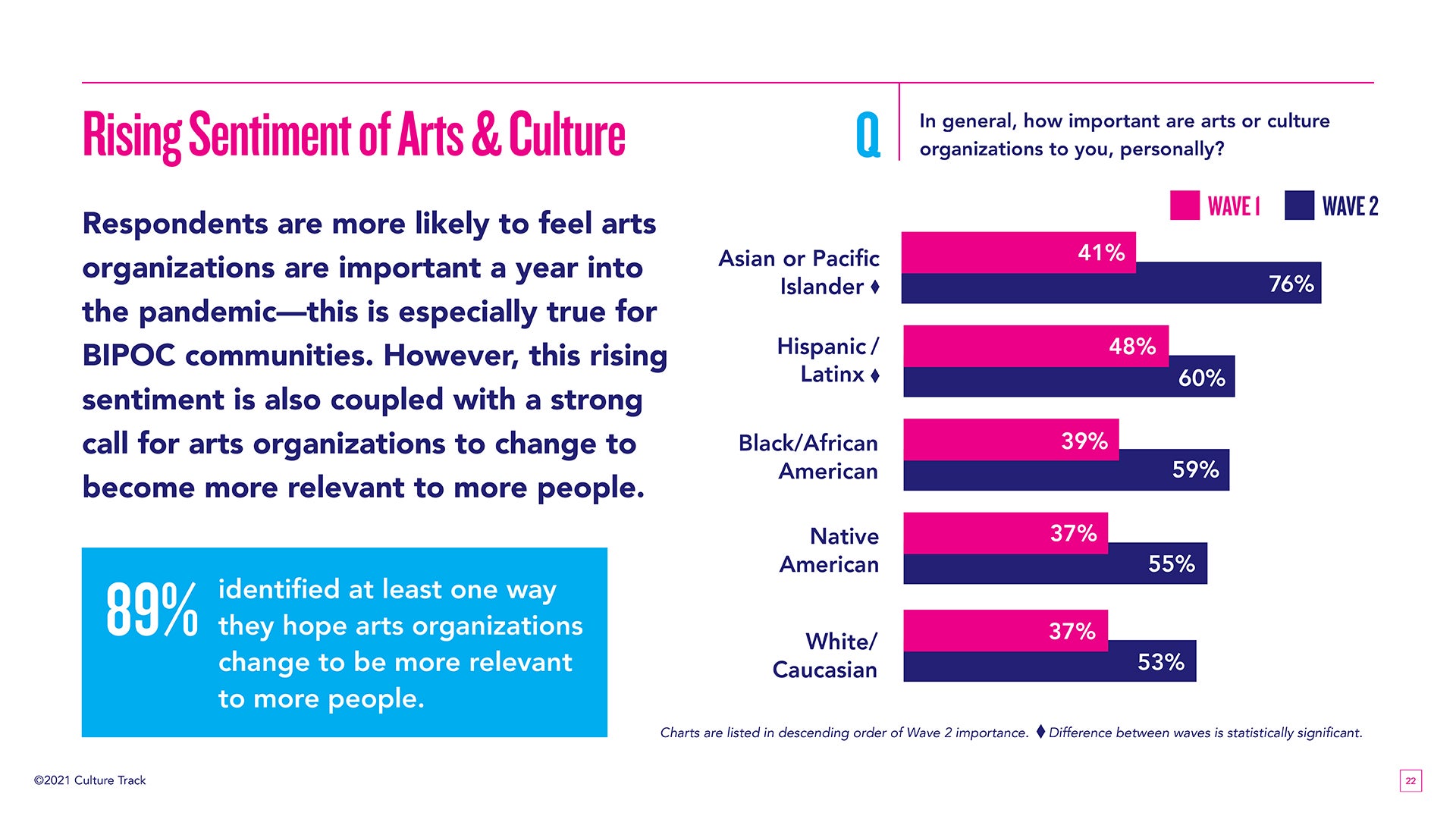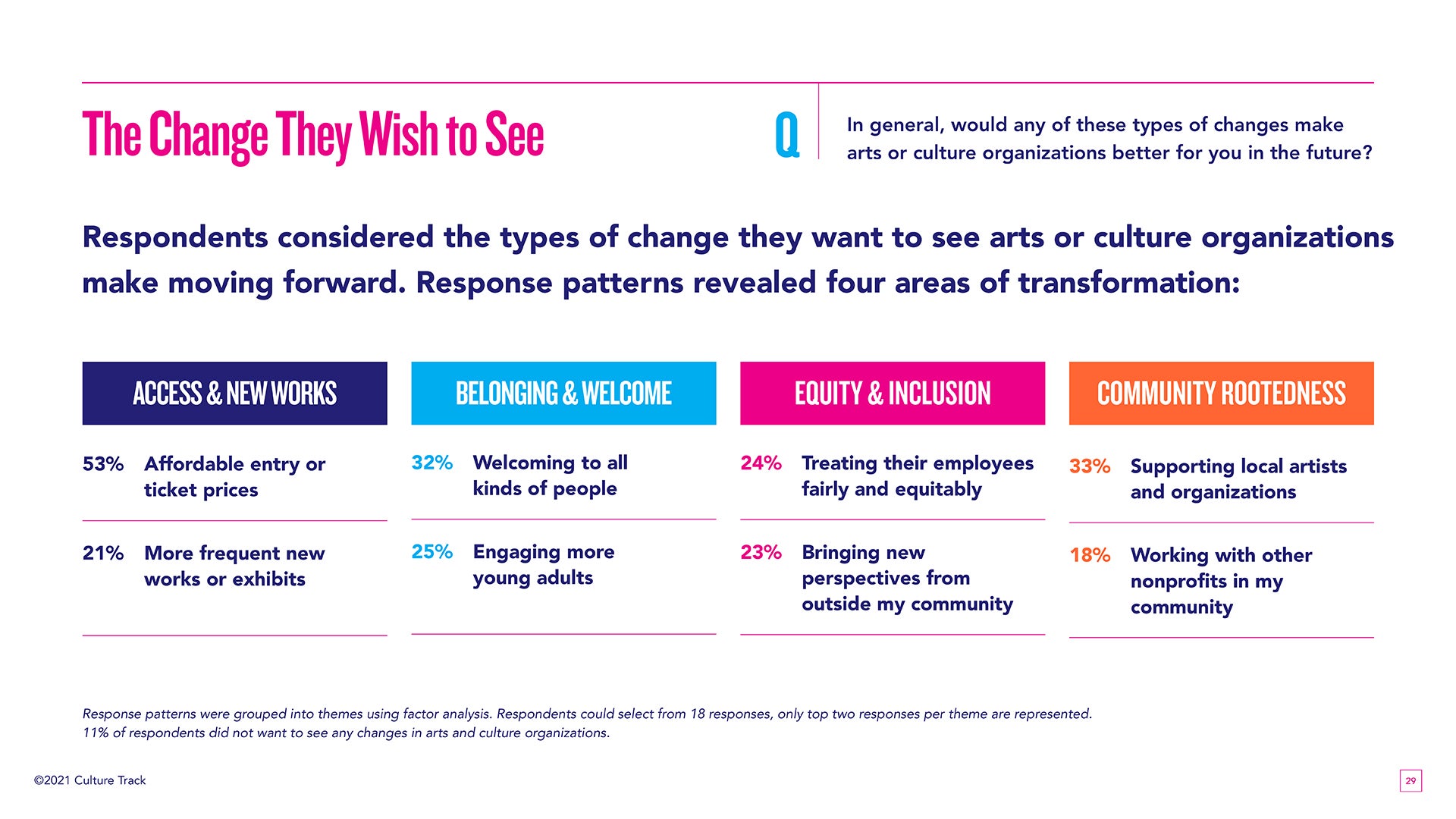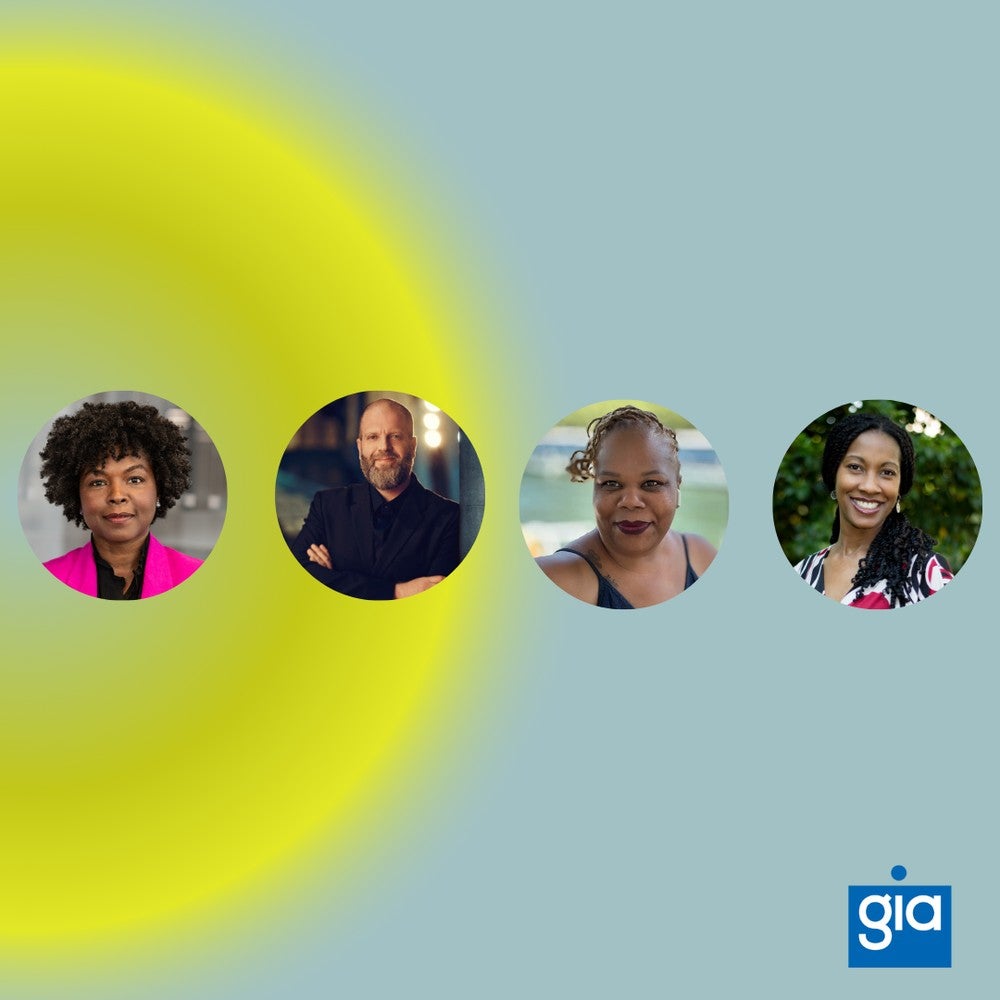More than half of Americans say that arts and culture organizations are important to them, according to a new study. The results are part of an ongoing research effort by the companies LaPlaca Cohen and Slover Linett Audience Research, called Culture + Community in a Time of Transformation.
This second wave of research is based on surveys conducted in May 2021. Along with its companion report, Rethinking relevance, rebuilding engagement, the survey finds that most Americans believe that arts organizations can play a critical role in helping their communities during this time of continuing change and crises. In fact, a majority of respondents said they wanted arts and culture organizations to actively address social justice issues in their community.
 To help break down some of these findings and their implications, we spoke via email with Jen Benoit-Bryan, Vice President and Co-Director of Research at Slover Linett. You can also see information on the earlier Culture Track work and study here.
To help break down some of these findings and their implications, we spoke via email with Jen Benoit-Bryan, Vice President and Co-Director of Research at Slover Linett. You can also see information on the earlier Culture Track work and study here.
Wallace Foundation: What does this study tell us about how Americans might be thinking about the value of the arts? Compared to other research, is there anything new or perhaps surprising about what this survey found?
Jen Benoit-Bryan: Going into the second wave of this study in early 2021, we anticipated that the personal salience of arts and culture organizations might have declined as people generally hadn’t been as involved in-person with these organizations, and many were grappling with illness and uncertainty in their lives. Instead, we saw a substantial increase in the proportion of Americans who viewed arts and culture organizations as important to them in May 2021 at 56 percent compared with 37 percent who said they were important when reflecting back to before the pandemic.
We’re not aware of any other national studies that have tracked the importance of the arts across the pandemic, but a study of residents in Washington state found similar patterns. ArtsFund’s omnibus panel of WA residents conducted in Fall 2021 found that about a third of residents value cultural programming more now than prior to the pandemic, while 55 percent value it about the same and just 14 percent value it less than they did before the pandemic.

This can be seen as a point of pride for the sector and as a statistic to cite in advocacy efforts. Of course, the increase could be due to Americans focusing more on their immediate needs during those early months of the pandemic, when the Wave 1 responses were gathered, and now having more room to explore other aspects of life, including culture and the arts.
WF: While the responses indicate that a majority of Americans want arts and culture organizations to actively address social issues, they place different priorities on specific issues (e.g., racial justice 42 percent, wealth inequality 31 percent and climate justice 31 percent). How should organizations apply these complicated findings in their own contexts?
JBB: While racial justice was the most-often selected issue that Americans want to see these organizations address, no single issue was selected by a majority of the respondents. That suggests that addressing multiple issues may be important to meeting the needs of many communities. There are some interesting patterns around which issues matter most to whom—for example, racial justice was a priority issue for a majority of Asians/Pacific Islanders and Black/African Americans (65 percent and 59 percent, respectively) and climate change was more likely to be a priority issue among Americans in coastal regions. We recommend that organizations think about what communities they hope to serve in the future (whether defined by geography, race and ethnicity or age, etc.), and then determine which issues to address.

Then there’s the question of what it means for an arts or culture organization to “address” those kinds of issues. We didn’t investigate that in the survey, but there are many examples around the field, and they span the spectrum of internal, programmatic and external or community action. For example, addressing climate change could take place internally (e.g. a recycling program, rainwater reuse, a LEED-certified building expansion, etc.); in programming (a theater production or sound art exhibition on the topic) and/or externally (a partnership with local nonprofit focused on installing solar arrays in new housing developments).
WF: When considering these findings, it’s important to remember that Americans are not a monolith, as you note throughout the report. Did you find any differences in responses when sorting the population by characteristics other than race, such as geography, income or education level?
JBB: Absolutely. We focused primarily on the lens of race and ethnicity in this report because we believe that amplifying BIPOC voices is critical to a more inclusive and representative cultural sector, and there are consistent and sizeable differences by race and ethnicity for most of our questions. But at various points in the report, we also highlight geographic, income, disability status and age differences in the responses. A deeper dive into the co-variation of some of these demographics with race and ethnicity would be a fascinating follow-up analysis. That could be particularly valuable for questions where we see clear differences by demographics, such as addressing social issues, perceptions of systemic racism and desires for change in the sector.
Because this data offers such a wealth of information—more than we can explore even in this rather lengthy new report—we’re making the data sets for both survey waves freely available to researchers and academics for additional analysis.
WF: The situation in the country changed while the data for the report were being collected and synthesized, from vaccines and new COVID-19 variants to political races across the country focusing on policing, public safety, race and education, and, more recently, escalating global conflict. How should readers of the report account for shifts like this when thinking about the survey data?
JBB: This is the perpetual problem of doing real, policy-level research as the world continues to change so fast. In a political poll, where the statistical weighting is simple and the analysis is just crosstabs, results can be provided quickly. In deep-dive studies like this, where the weighting to combine the data sources into one national picture took weeks, and the exploratory analysis took months, we knew we’d still be making meaning from responses collected at a fixed time in the past. That’s why we focused many of the survey questions on broad themes that we expect to change slowly—things that aren’t really COVID-dependent, like the role of arts and culture in society, the kinds of change people hope to see across the sector and the value people receive through different kinds of engagement. In contrast, projects like WolfBrown’s Audience Outlook Monitor fill the important role of providing more rapid, repeating assessments of more highly variable questions, like how audiences feel about going out again and what will make them feel safe attending in person.
As with all data, I’d recommend reading our Culture + Community/Culture Track findings with an eye to both your local context and how the world as a whole has been changing since the Wave 2 data collection in May 2021.
This is part one of a two-part blog series focused on recent reports published by Slover Linett as part of Culture + Community in a Time of Transformation: A Special Edition of Culture Track. The second part, to be published in the coming weeks, will focus on A Place to Be Heard; A Space to Feel Held, a qualitative study of the perspectives of Black Americans on creativity, trustworthiness, welcome, and well-being.
For more information on this report, or to request the complete data sets for both survey waves, email CCTT@sloverlinett.com.
The included charts are excerpted from the Culture + Community in a Time of Transformation: A Special Edition of Culture Track report. (https://s28475.pcdn.co/wp-content/uploads/2021/11/CCTT-Key-Findings-from-Wave-2.pdf)




